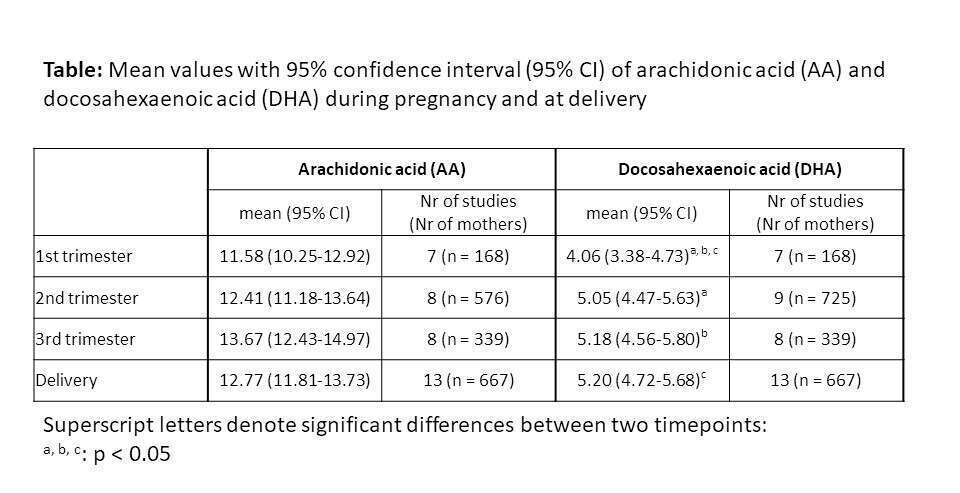
Meta-Analysis of 196 Articles: Fatty Acid Supply of Expecting Women during Pregnancy and at Delivery in Erythrocyte Membrane Phospholipids
2Department of Paediatrics, University of Pecs, Hungary
3Department of Biochemistry and Medical Chemistry, University of Pecs, Hungary
Background: Long-chain polyunsaturated fatty acids are important for the maturation of the developing nervous system. As fetal fatty acids originate from maternal stores, the fetal as well as the neonatal supply are determined by the maternal fatty acids.
Objective: To systematically review available data on fatty acid composition of plasma and erythrocyte membrane lipids in expecting women during pregnancy and at delivery.
Methods: We performed electronic literature search in July 2017 on Cochrane Library, Embase, and Ovid Medline with a search strategy including the following search expressions: (pregnant* OR gestation* OR deliver*) AND (arachidonic OR docosahexaenoic) NOT animal. We analysed data from clinical trials investigating fatty acid composition of plasma or erythrocyte membrane lipids in healthy expecting women without any fatty acid supplementation during pregnancy. Statistical analysis of fatty acid data was performed by Comprehensive Meta-Analysis v3.0 Software.
Results: After excluding duplicates there were 3351 potentially relevant articles. We excluded 3155 articles because they didn’t meet our inclusion criteria. 196 relevant articles remained that published fatty acid data of plasma or erythrocyte membrane lipids, from them 19 articles published data of erythrocyte membrane phospholipids. Only 7-9 studies investigated the fatty acid composition of erythrocyte membrane phospholipids during pregnancy, while at delivery there were 13 articles publishing fatty acid data. Values of arachidonic acid remained quite stable in the course of pregnancy as well as at delivery. In contrast, values of docosahexaenoic acid were significantly lower during the 1st trimester than in later timepoints and then it remained quite stable (Table).
Conclusions: 1. Our results indicate that on a population level both docosahexaenoic acid and arachidonic acid status remain quite stable during pregnancy. 2. Our present data can serve as reference values for future fatty acid supplementation studies in expecting women.
Powered by Eventact EMS